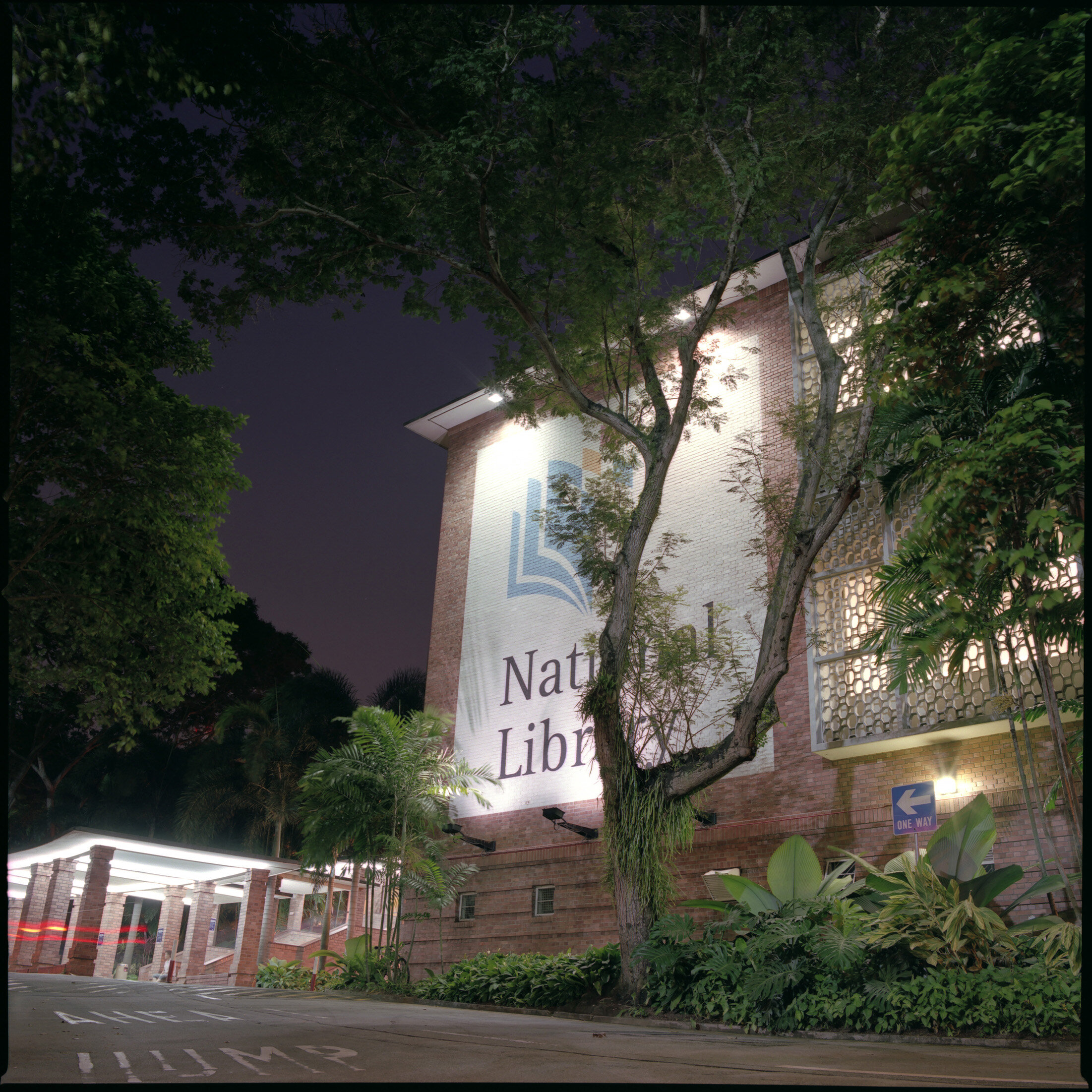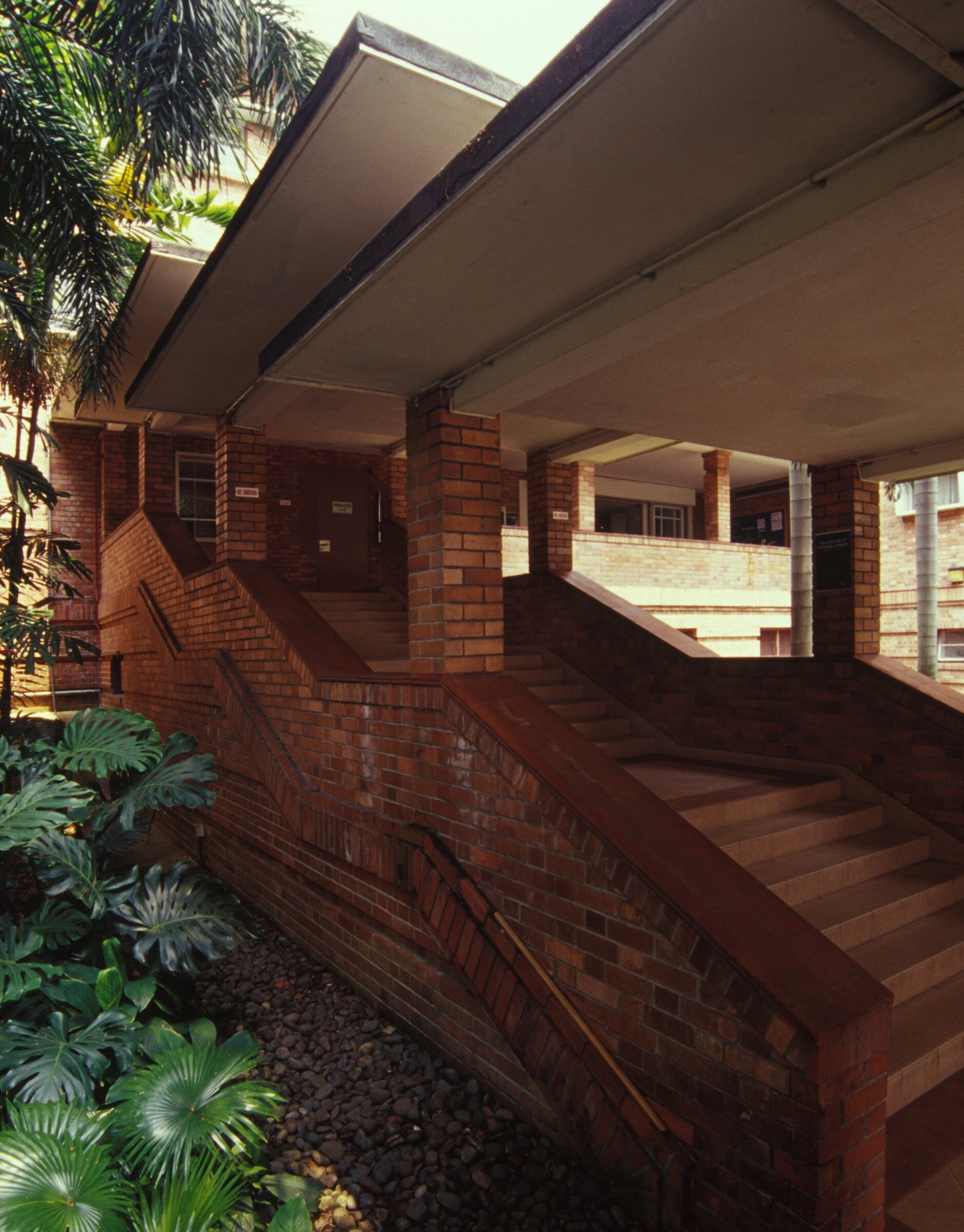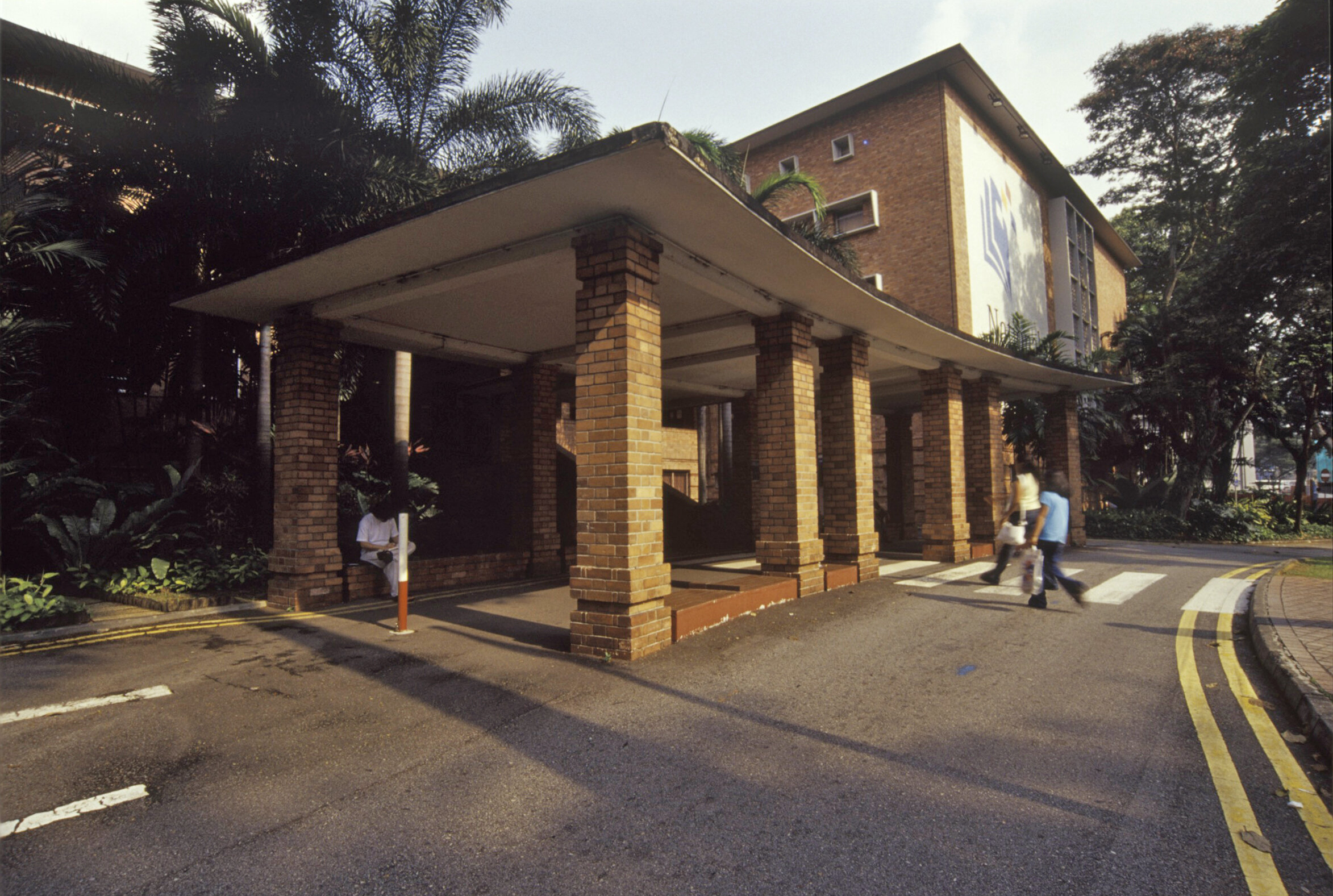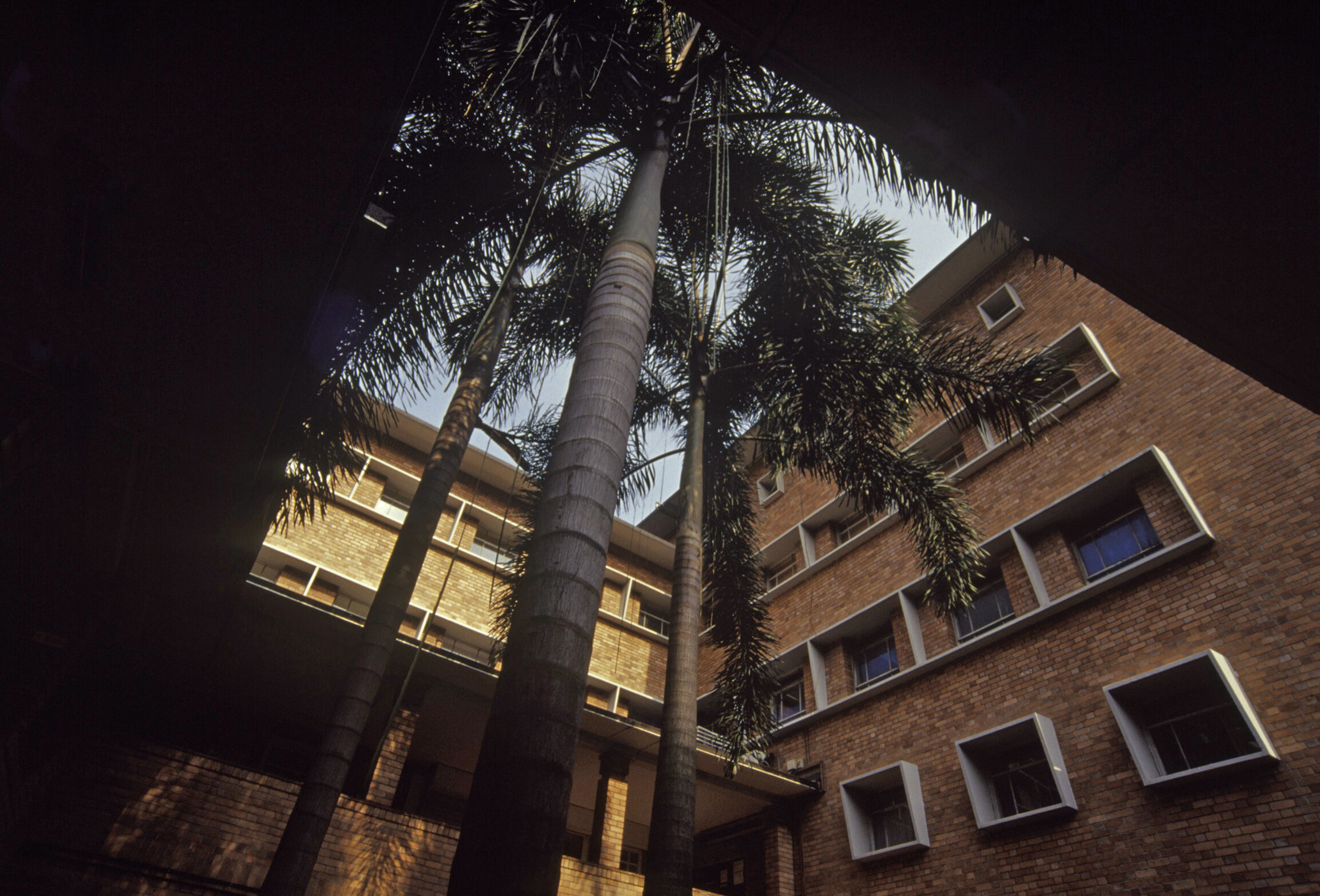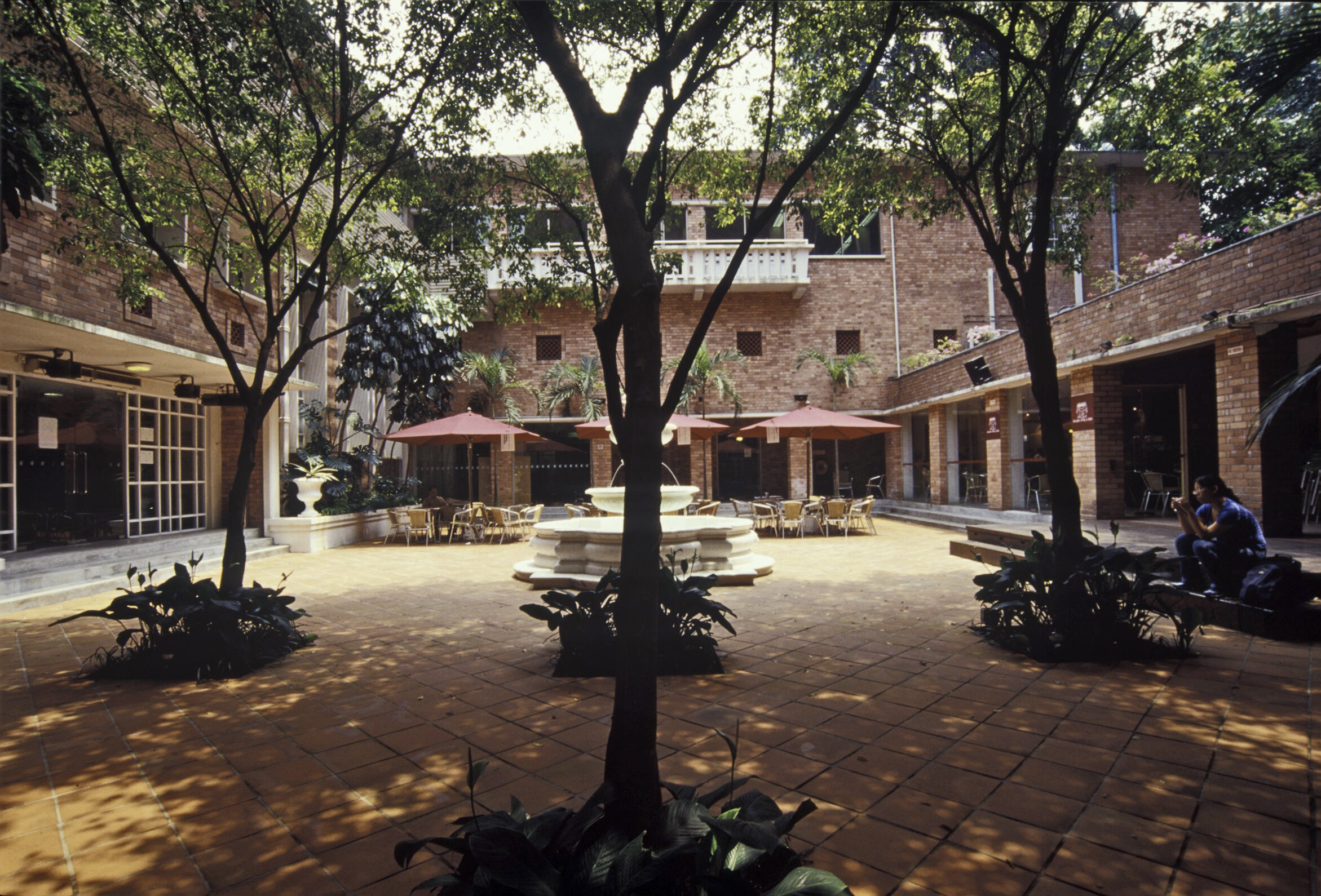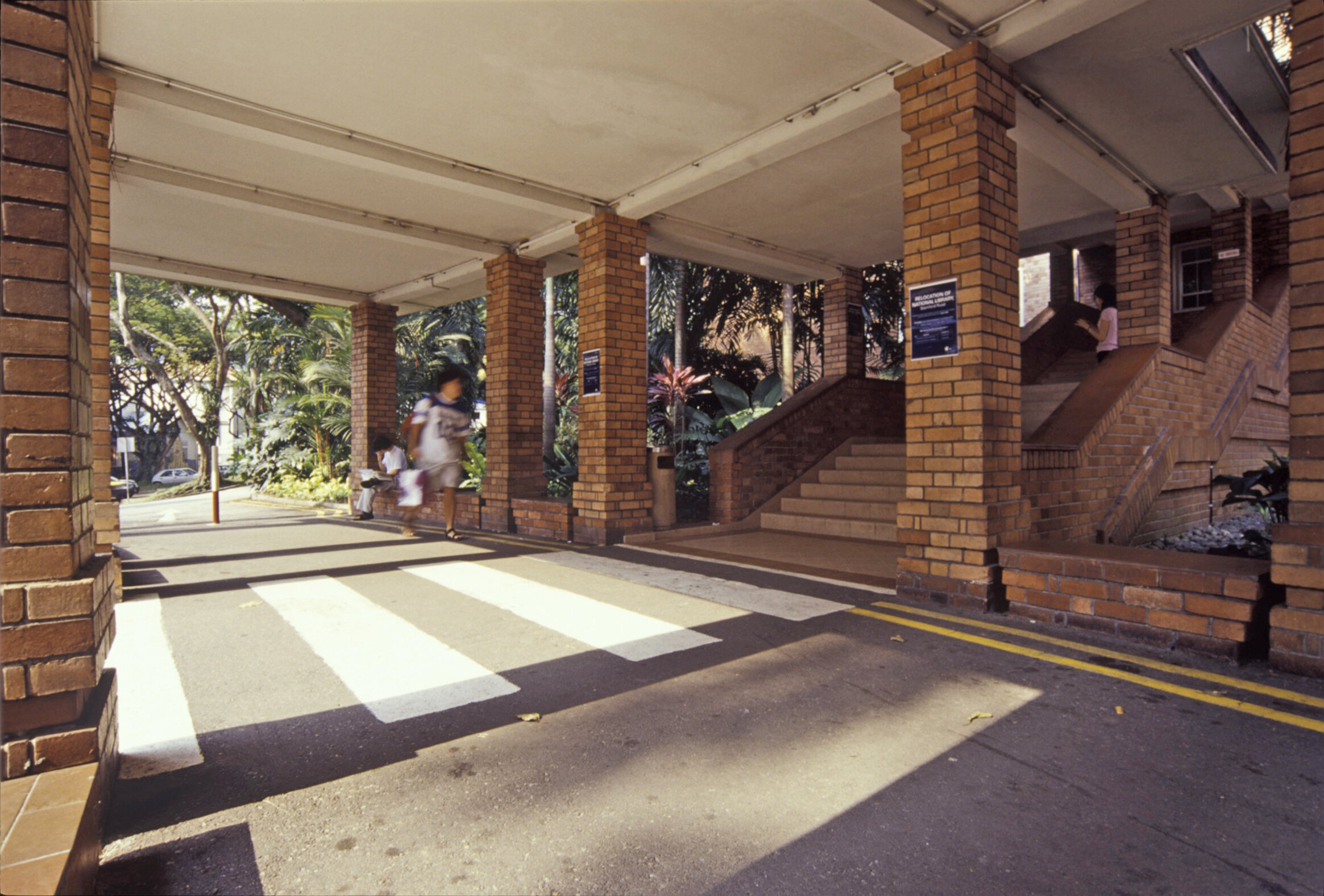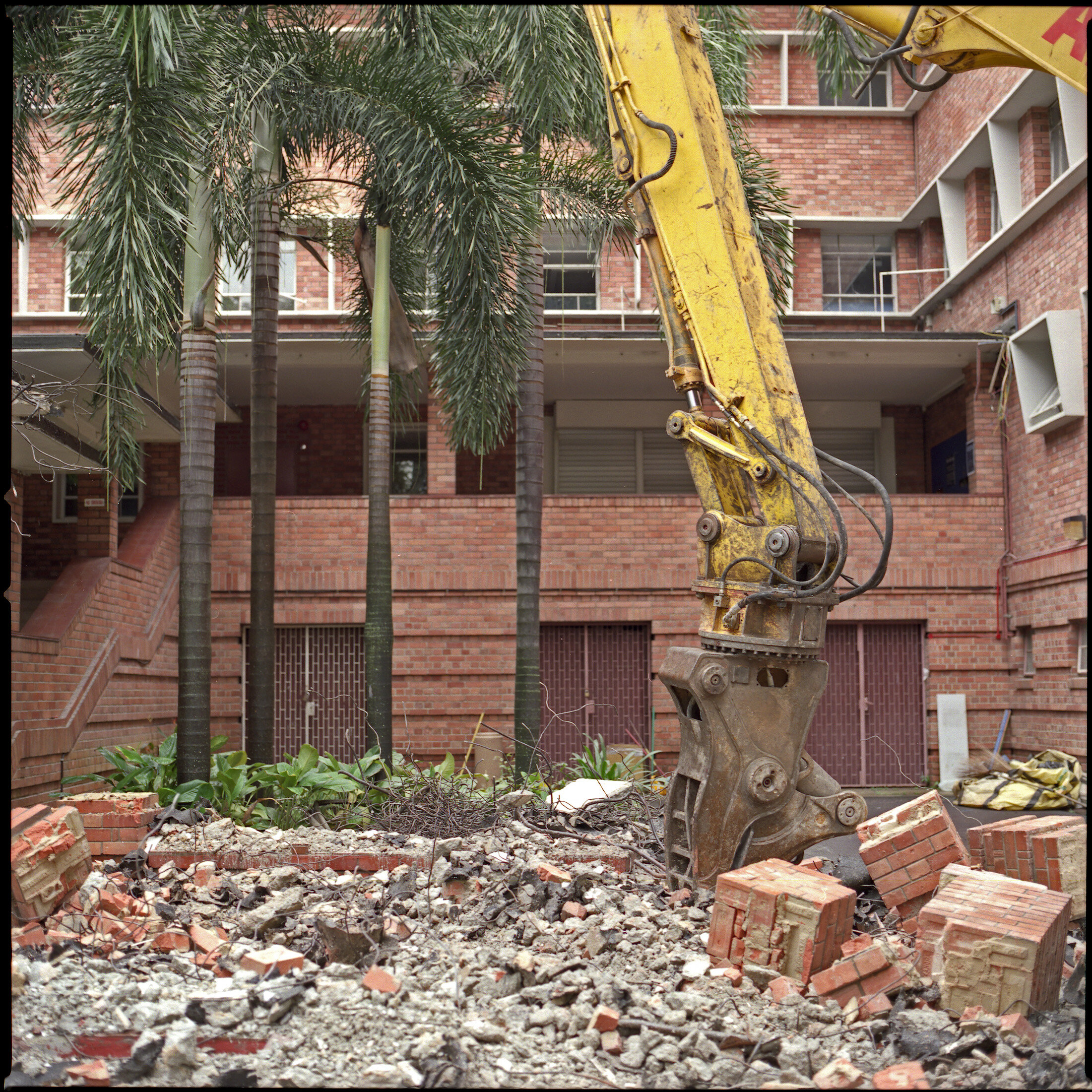The National Library at Stamford Road
When the old National Library Building at Stamford Road was threatened with demolition around the 2000s, many rallied for its preservation instead.¹ The move was hotly debated in Parliament and local architect Tay Kheng Soon even put forth a proposal to keep the building while tackling the transportation and land issues that purportedly necessitated its removal.² However, the library was regarded as not having “enough” merit for keeping by the Preservation of Monuments Board, then a statutory body responsible for safeguarding historical landmarks in Singapore, and was eventually torn down in 2005. The decision has been called a “grievous loss of heritage”, and continues to be a sore point in the city-state’s conservation history.³
The controversial ending of the brick-faced library designed by British architect Lionel Bintley of the colonial Public Works Department echoes its similarly divisive birth. When the National Library was completed in 1960, Rumah, the official journal of the Society of Malayan Architects, was unsparing in its criticism:
The building has been considered massive, clumsy and heavy. It lacks grace and elegance. It suggests a last minute and unsolved attempt to tackle the problem of the tropical sun. The articulation and circulation are indefinite, and the design concept has not been given sufficient emphasis for a major and complex building of this nature. There are no consistent structural principle and little spatial relationship between the different sections of the building.⁴
Despite such professional misgivings about its architecture, the library became a success with the public as membership rose rapidly with its opening. Beyond just a repository for books and a place for promoting literacy, it also regularly hosted art and photographic exhibitions, film shows and talks.⁵ The National Library and the subsequently built branch libraries across the city-state became the “educational, social and cultural centres” of Singapore.⁶ Its first post-independence director, Hedwig Anuar, observed that many Singaporeans “make use of the library as a club… com[ing] regularly to read, meet their friends and attend the various activities.”⁷
Locations: 91 Stamford Rd, Singapore 178896
Architects: Lionel Bintley, Colonial Public Works Department
Year: 1960
Status: Demolished in 2001
¹ Maria Almenoar, “Hundreds Bid Final Farewell to Library,” The Straits Times, 1 April 2004.
² Lydia Lim, “National Library to Go,” ibid., 7 March 2000.
³ The words of the Straits Times editor Warren Fernandez, “Balancing Past, Present and Future: Ura Plans Make Plain That S’pore Remains a Work in Progress,” The Sunday Times, 24 November 2014. For laments, see “Love for Library That Held More Than Just Books,” The Straits Times, 8 August 2009; Natasha Ann Zachariah, “The Past Revisited: Three Conservation Advocates Have Put out a Book to Highlight Singapore’s Early Architectural Gems,” ibid., 30 May 2015.
⁴ “The National Library,” Rumah, Journal of Society of Malayan Architects 3 (1960). One of the committee’s member, William Lim, also had his criticism reported in the newspaper. See Mok-ai Ian, “They Gasp with Horror at This ‘Monstrous Monument’,” The Singapore Free Press, 9 July 1960.
⁵ Among the early exhibitions held were “Housing in Singapore” organised by the Housing Development Board in 1963 and an exhibition on African and Asian countries held to coincide with the 1965 Afro-Asian Congress hosted by Singapore that year. See Annual Report of the National Library 1963, (Singapore: National Library, 1966), 9; Annual Report of the National Library 1965, (Singapore: National Library, 1967), 15.
⁶ Ismail Kassim, “Making Libraries Social and Cultural Centres,” New Nation, 21 May 1974.
⁷ Ibid.
Last modified on 4 May 2021. Description by Chang Jiat Hwee, edited by Justin Zhuang.


